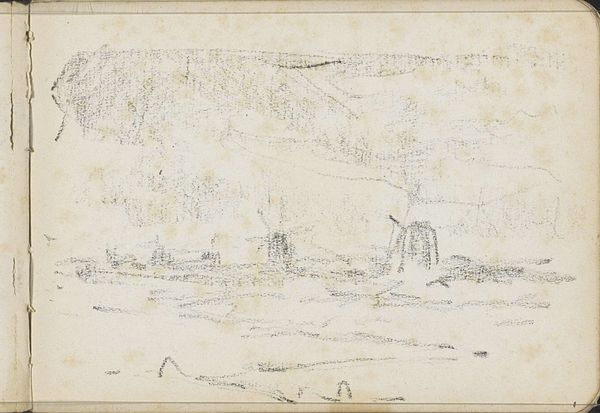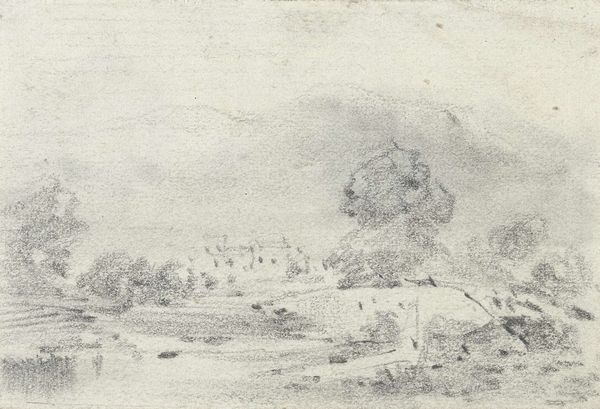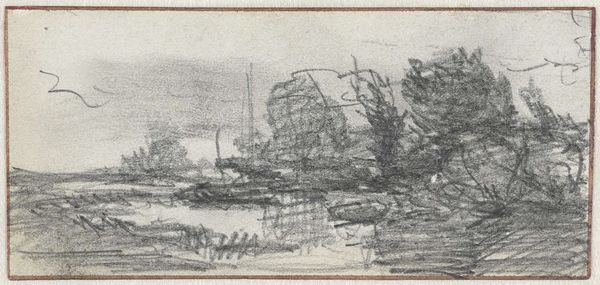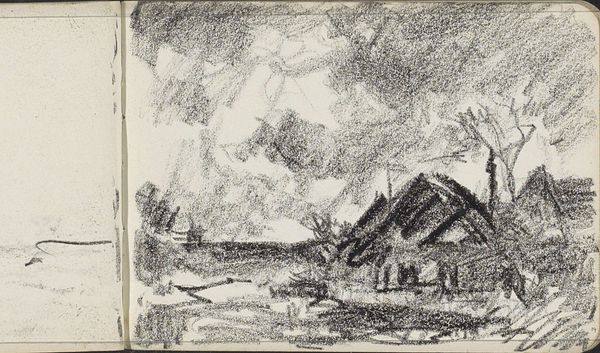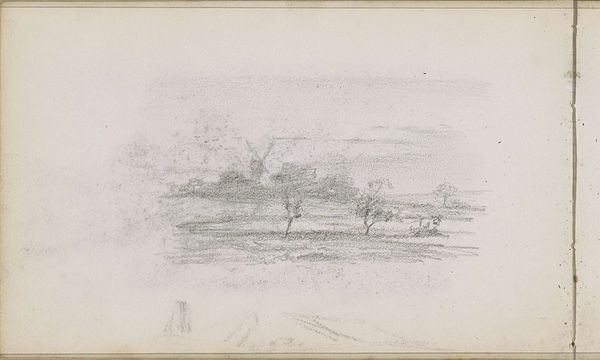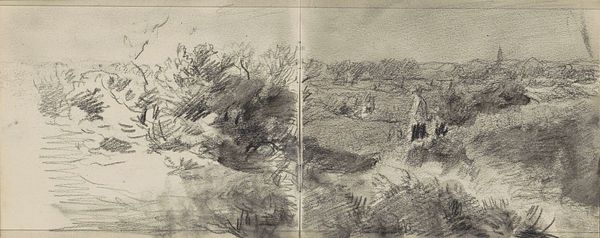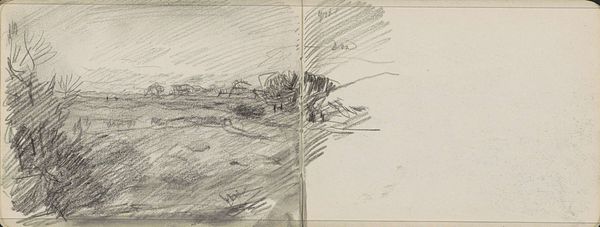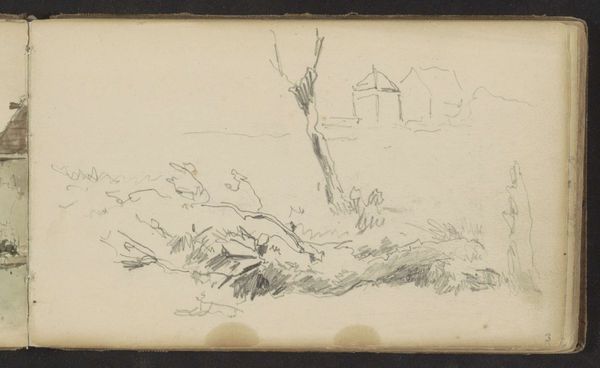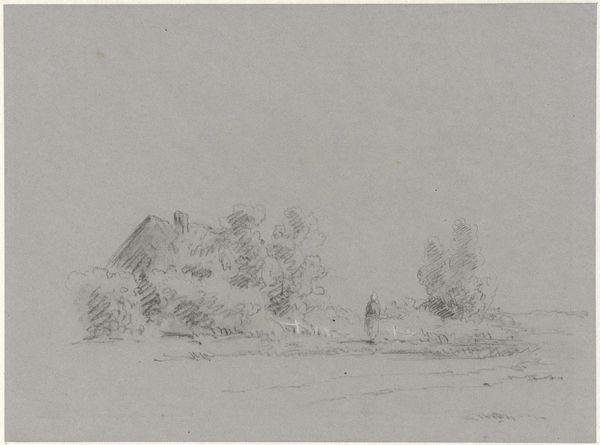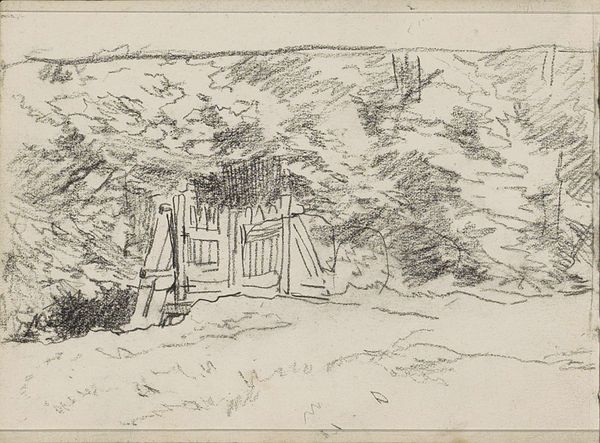
drawing, pencil
#
drawing
#
pencil sketch
#
landscape
#
pencil
#
realism
Dimensions: height 37 mm, width 59 mm
Copyright: Rijks Museum: Open Domain
Editor: This is "Landscape with a Hay Wain," a pencil drawing by Maxime Lalanne, created sometime between 1837 and 1886. It has a kind of subdued, almost somber mood because of the limited tonal range. How do you interpret the composition and use of line in this drawing? Curator: The success of this landscape hinges on Lalanne's expert manipulation of tonal values to create depth and volume. Observe how the density of the pencil strokes varies across the composition. Where does the artist apply the darkest values? Editor: It seems like the heaviest concentration of dark lines is in the background, especially around the large haystack, and then again in the foreground vegetation near the lower edge of the drawing. Curator: Precisely. By concentrating the darkest tones at the back and front, and leaving the middle ground lighter, Lalanne has created a complex visual space with the pencil, pushing some elements forward while causing others to recede. And what of the linearity itself? How would you describe the different kinds of marks Lalanne employs? Editor: Some areas are quite sketch-like with short, broken lines, while others show long, flowing strokes. I notice the verticals used in the shed on the right contrast with the horizontals suggesting the ground. Curator: Notice how this contrast in mark-making generates a certain tension between the constructed and the natural, inviting contemplation on the landscape and its elements. Editor: I see what you mean! Looking at it in terms of just the marks, I notice the relationships more. Curator: Indeed, this heightened attention to the interplay of line and tone reveals how a seemingly simple drawing can offer profound formal complexity.
Comments
No comments
Be the first to comment and join the conversation on the ultimate creative platform.
